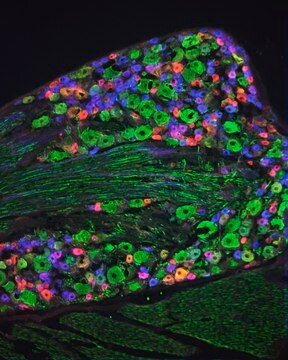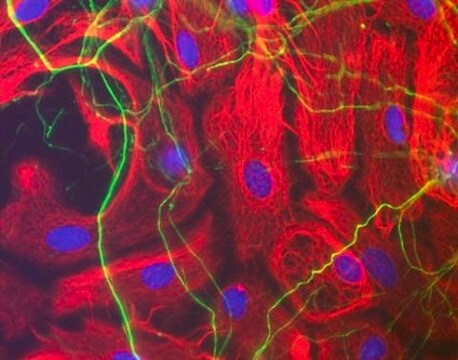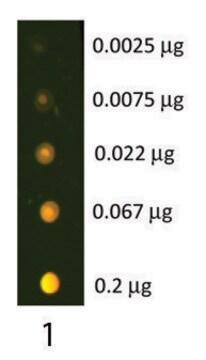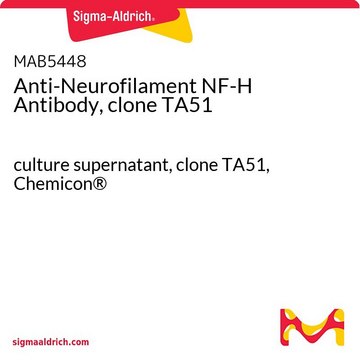SAB4200705
Anti-Neurofilament 200 (Phos and Non-Phos) antibody, Mouse monoclonal
clone N52, purified from hybridoma cell culture
Sinonimo/i:
Anti-CMT2CC, Anti-NFH
About This Item
Prodotti consigliati
Forma dell’anticorpo
purified from hybridoma cell culture
Livello qualitativo
Tipo di anticorpo
primary antibodies
Clone
N52, monoclonal
PM
~200 kDa
Reattività contro le specie
mouse, pig, feline, rat, monkey, bovine, human
Concentrazione
~1.0 mg/mL
tecniche
immunoblotting: 2.5-5 μg/mL using human neuroblastoma SH-SY5Y cell line fresh lysate
immunofluorescence: suitable
immunohistochemistry: 10 μg/mL using heat-retrieved formalin-fixed, paraffin-embedded human Cerebellum sections
Isotipo
IgG1
N° accesso UniProt
Condizioni di spedizione
dry ice
Temperatura di conservazione
−20°C
modifica post-traduzionali bersaglio
unmodified
Informazioni sul gene
pig ... NEFH(100156492)
Descrizione generale
Specificità
Applicazioni
- immunoblotting
- immunofluorescence
- immunohistochemistry
Azioni biochim/fisiol
Stato fisico
Stoccaggio e stabilità
Esclusione di responsabilità
Non trovi il prodotto giusto?
Prova il nostro Motore di ricerca dei prodotti.
Codice della classe di stoccaggio
10 - Combustible liquids
Punto d’infiammabilità (°F)
Not applicable
Punto d’infiammabilità (°C)
Not applicable
Certificati d'analisi (COA)
Cerca il Certificati d'analisi (COA) digitando il numero di lotto/batch corrispondente. I numeri di lotto o di batch sono stampati sull'etichetta dei prodotti dopo la parola ‘Lotto’ o ‘Batch’.
Possiedi già questo prodotto?
I documenti relativi ai prodotti acquistati recentemente sono disponibili nell’Archivio dei documenti.
Il team dei nostri ricercatori vanta grande esperienza in tutte le aree della ricerca quali Life Science, scienza dei materiali, sintesi chimica, cromatografia, discipline analitiche, ecc..
Contatta l'Assistenza Tecnica.







